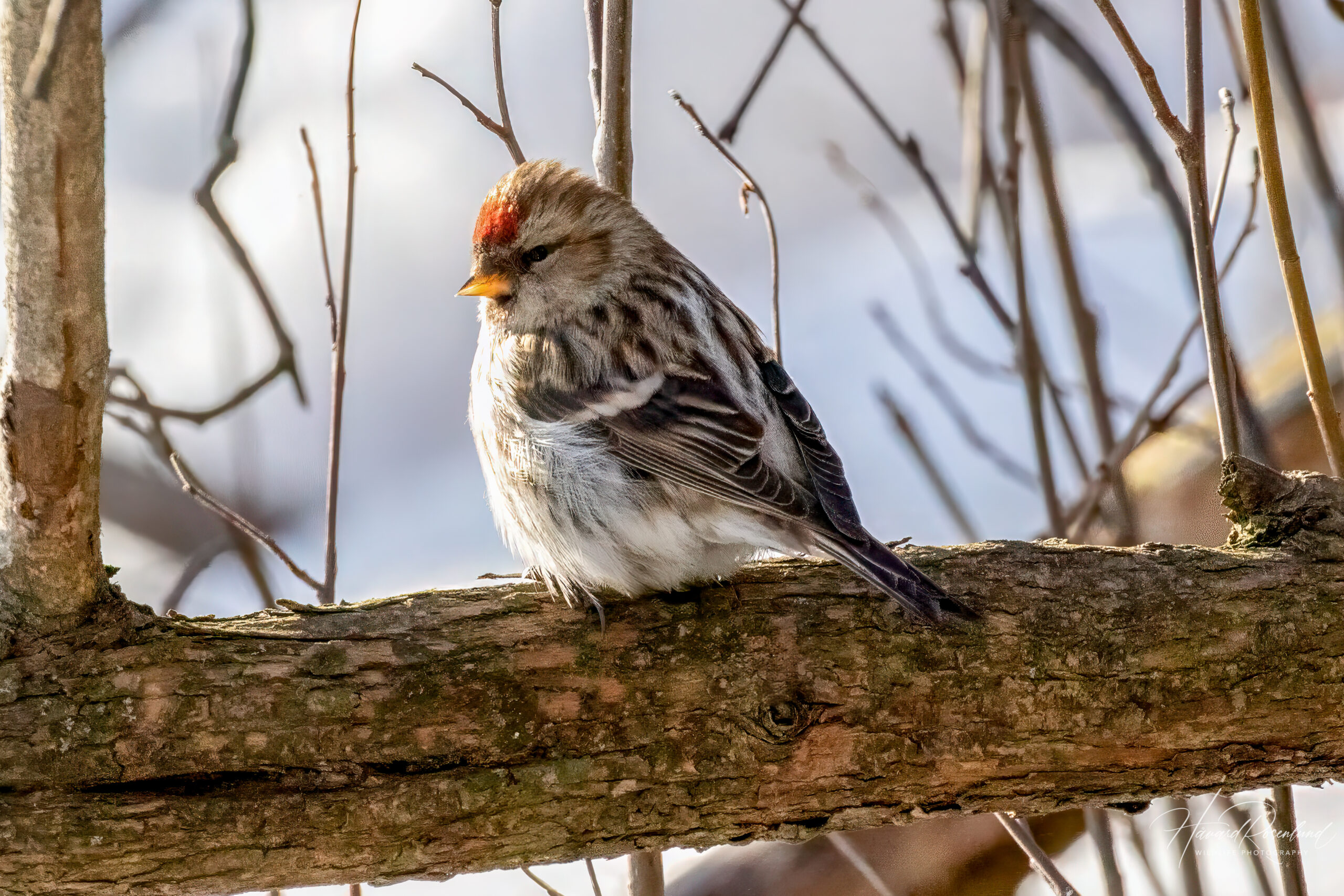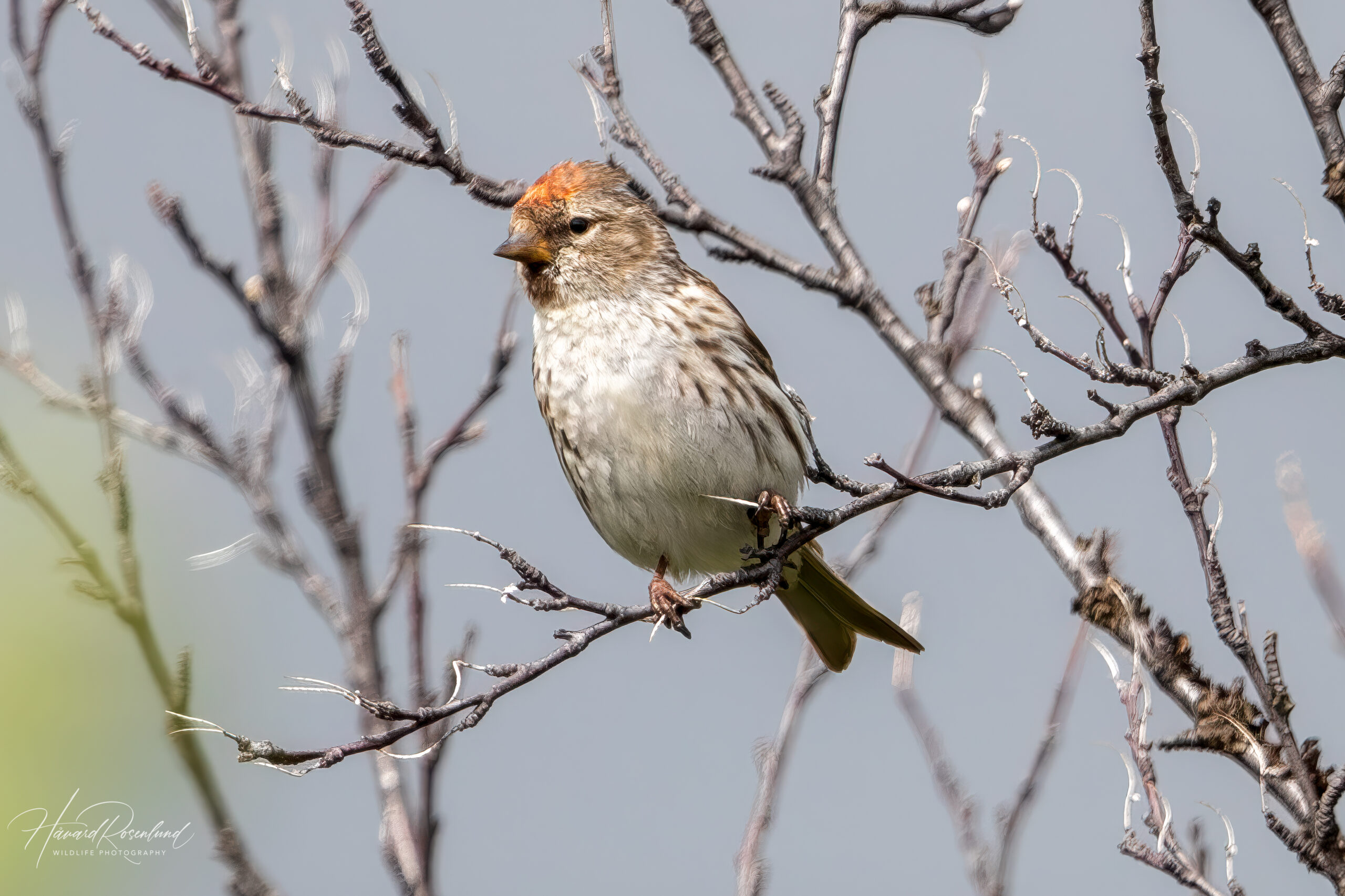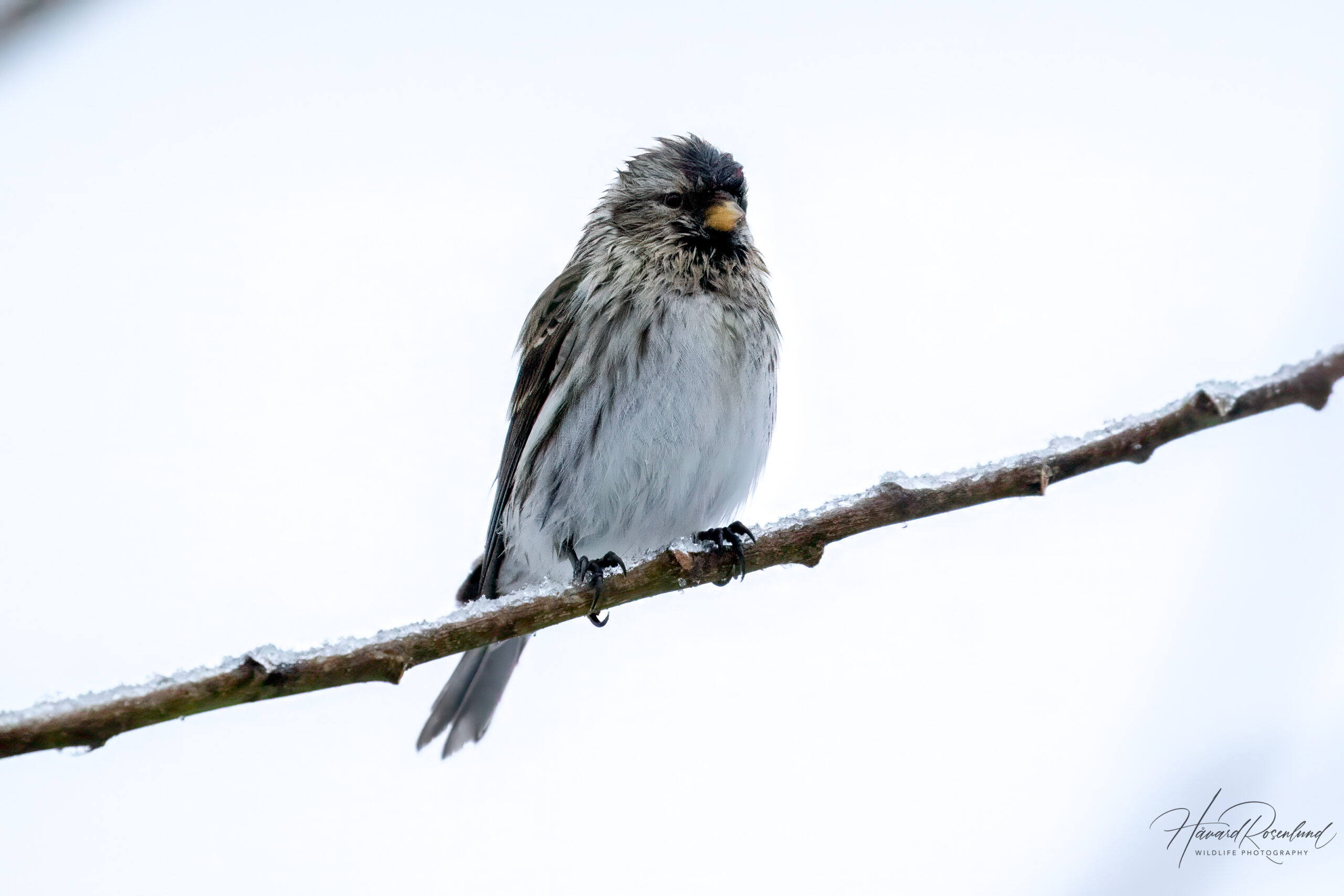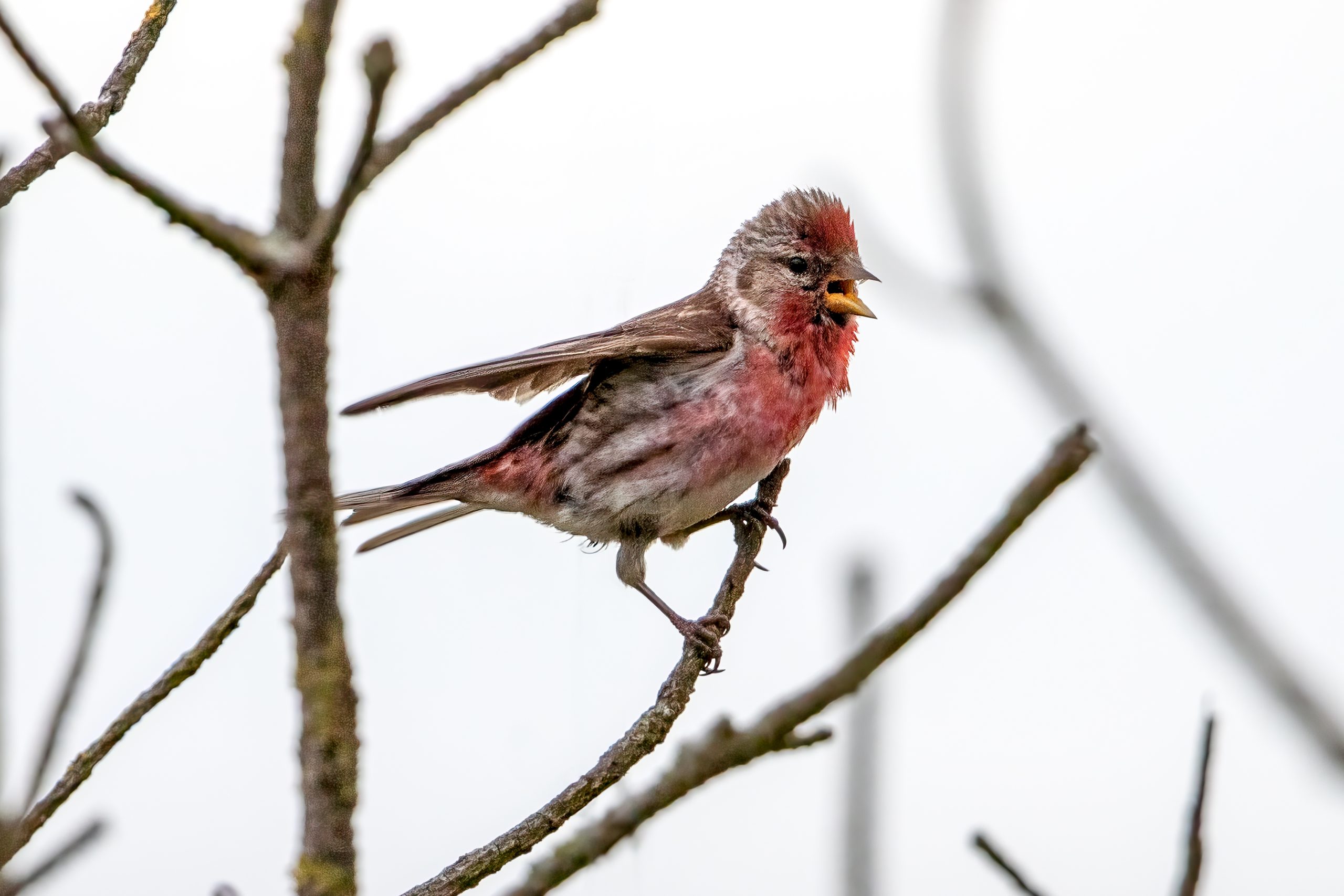Description
The common redpoll (Acanthis flammea) is a small bird belonging to the finch family, with a wide distribution across northern Eurasia and North America. It has a distinctive crimson red patch on its forehead and a black chin, making it easily recognizable. Males typically show a pinkish wash on their breast, which is absent in females. The bird measures approximately 12 to 14 cm (4.7-5.5 in) in length and weighs about 11 to 20 grams (0.4-0.7 oz). Outside the breeding season, common redpolls are highly sociable and often form large flocks, which may include other finch species.
The common redpoll is often confused with the lesser redpoll (Acanthis cabaret) and the hoary redpoll (Acanthis hornemanni). The hoary redpoll is generally paler with a smaller bill and breeds further north, whereas the lesser redpoll closely resembles the common but is slightly smaller, is typically more brown and the male often has a more defined red forehead and breast. Some authorities consider all three species to be subspecies of the same species.
Diet & habitat
Common redpolls thrive in subarctic and boreal forests, often extending their habitat into open, scrubby areas during migration. They are particularly adapted to cold climates, often using their ability to store seeds in their throat pouch to survive harsh winters. Their diet primarily consists of seeds from birches, alders, and willows, but during the breeding season, they may also consume insects. They are adept at foraging, often hanging acrobatically from branches to access seeds. The common redpoll is also known to create tunnels in the snow to stay warm during extreme cold, a unique adaptation to its harsh environments.
Migration
Common redpolls are notable for their irregular migration patterns, often influenced by the cyclical abundance of food sources in their natural habitat. They breed in the northernmost parts of North America and Eurasia and winter further south in temperate zones. Migration occurs in large flocks that can sometimes invade more southern areas when food supplies in their usual wintering grounds are scarce.







